Activity-dependent modulation of synapse-regulating genes in astrocytes
- PMID: 34494546
- PMCID: PMC8497060
- DOI: 10.7554/eLife.70514
Activity-dependent modulation of synapse-regulating genes in astrocytes
Abstract
Astrocytes regulate the formation and function of neuronal synapses via multiple signals; however, what controls regional and temporal expression of these signals during development is unknown. We determined the expression profile of astrocyte synapse-regulating genes in the developing mouse visual cortex, identifying astrocyte signals that show differential temporal and layer-enriched expression. These patterns are not intrinsic to astrocytes, but regulated by visually evoked neuronal activity, as they are absent in mice lacking glutamate release from thalamocortical terminals. Consequently, synapses remain immature. Expression of synapse-regulating genes and synaptic development is also altered when astrocyte signaling is blunted by diminishing calcium release from astrocyte stores. Single-nucleus RNA sequencing identified groups of astrocytic genes regulated by neuronal and astrocyte activity, and a cassette of genes that show layer-specific enrichment. Thus, the development of cortical circuits requires coordinated signaling between astrocytes and neurons, highlighting astrocytes as a target to manipulate in neurodevelopmental disorders.
Keywords: astrocytes; developmental biology; gene expression; mouse; neuronal activity; neuroscience; synaptic terminals; visual development.
© 2021, Farhy-Tselnicker et al.
Conflict of interest statement
IF, MB, HL, CD, GE, EB, CF, MS, JE, NA No competing interests declared
Figures
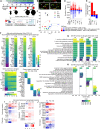

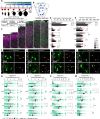

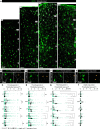

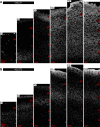
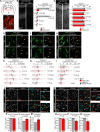
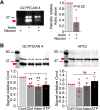

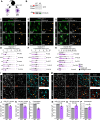
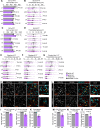
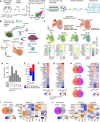

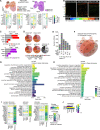
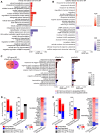
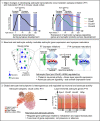
Similar articles
-
Loss of Local Astrocyte Support Disrupts Action Potential Propagation and Glutamate Release Synchrony from Unmyelinated Hippocampal Axon Terminals In Vitro.J Neurosci. 2015 Aug 5;35(31):11105-17. doi: 10.1523/JNEUROSCI.1289-15.2015. J Neurosci. 2015. PMID: 26245971 Free PMC article.
-
Astrocytic Ephrin-B1 Controls Excitatory-Inhibitory Balance in Developing Hippocampus.J Neurosci. 2020 Sep 2;40(36):6854-6871. doi: 10.1523/JNEUROSCI.0413-20.2020. Epub 2020 Aug 12. J Neurosci. 2020. PMID: 32801156 Free PMC article.
-
Astrocyte-derived estrogen enhances synapse formation and synaptic transmission between cultured neonatal rat cortical neurons.Neuroscience. 2007 Feb 23;144(4):1229-40. doi: 10.1016/j.neuroscience.2006.09.056. Epub 2006 Dec 19. Neuroscience. 2007. PMID: 17184929
-
Astrocytic control of glutamatergic activity: astrocytes as stars of the show.Trends Neurosci. 2004 Dec;27(12):735-43. doi: 10.1016/j.tins.2004.10.008. Trends Neurosci. 2004. PMID: 15541514 Review.
-
Brain stars take the lead during critical periods of early postnatal brain development: relevance of astrocytes in health and mental disorders.Mol Psychiatry. 2024 Sep;29(9):2821-2833. doi: 10.1038/s41380-024-02534-4. Epub 2024 Mar 29. Mol Psychiatry. 2024. PMID: 38553540 Free PMC article. Review.
Cited by
-
Glia Regulate the Development, Function, and Plasticity of the Visual System From Retina to Cortex.Front Neural Circuits. 2022 Feb 1;16:826664. doi: 10.3389/fncir.2022.826664. eCollection 2022. Front Neural Circuits. 2022. PMID: 35177968 Free PMC article. Review.
-
Developmental roles of astrocytes in circuit wiring.Curr Opin Neurobiol. 2025 Jun;92:103042. doi: 10.1016/j.conb.2025.103042. Epub 2025 May 13. Curr Opin Neurobiol. 2025. PMID: 40367704 Review.
-
A divergent astrocytic response to stress alters activity patterns via distinct mechanisms in male and female mice.Nat Commun. 2025 Jul 10;16(1):6372. doi: 10.1038/s41467-025-61643-y. Nat Commun. 2025. PMID: 40640165 Free PMC article.
-
Aberrant astrocyte protein secretion contributes to altered neuronal development in multiple models of neurodevelopmental disorders.Nat Neurosci. 2022 Sep;25(9):1163-1178. doi: 10.1038/s41593-022-01150-1. Epub 2022 Aug 30. Nat Neurosci. 2022. PMID: 36042312 Free PMC article.
-
Neuronal enhancers fine-tune adaptive circuit plasticity.Neuron. 2024 Sep 25;112(18):3043-3057. doi: 10.1016/j.neuron.2024.08.002. Epub 2024 Aug 28. Neuron. 2024. PMID: 39208805 Review.
References
-
- Allen Brain Institute 2008. Allen Developing Mouse Brain Atlas. Allen Brain Institute. https://developingmouse.brain-map.org/
Publication types
MeSH terms
Substances
Associated data
- Actions
- Actions
- Actions
Grants and funding
LinkOut - more resources
Full Text Sources
Other Literature Sources
Molecular Biology Databases

